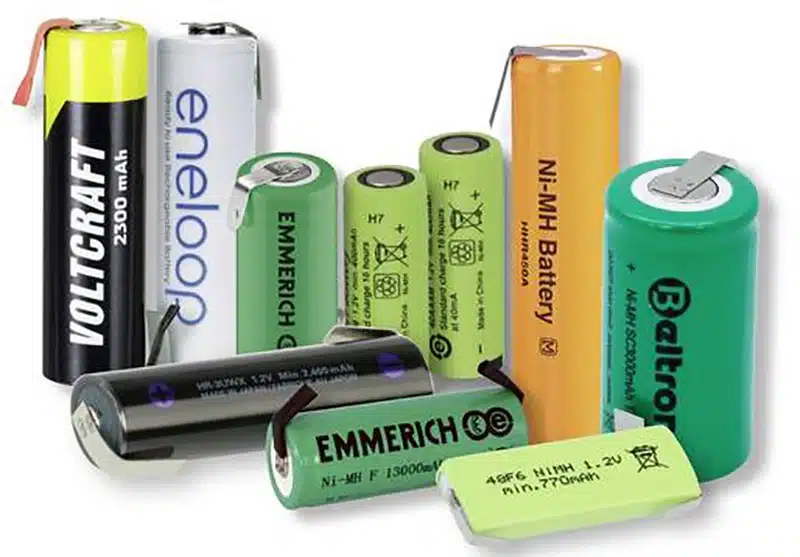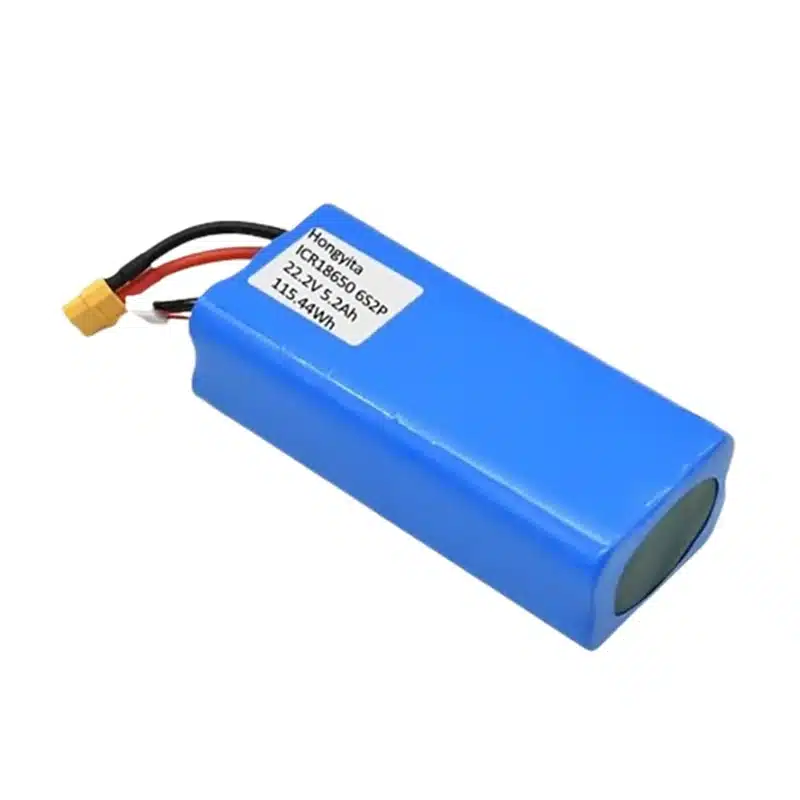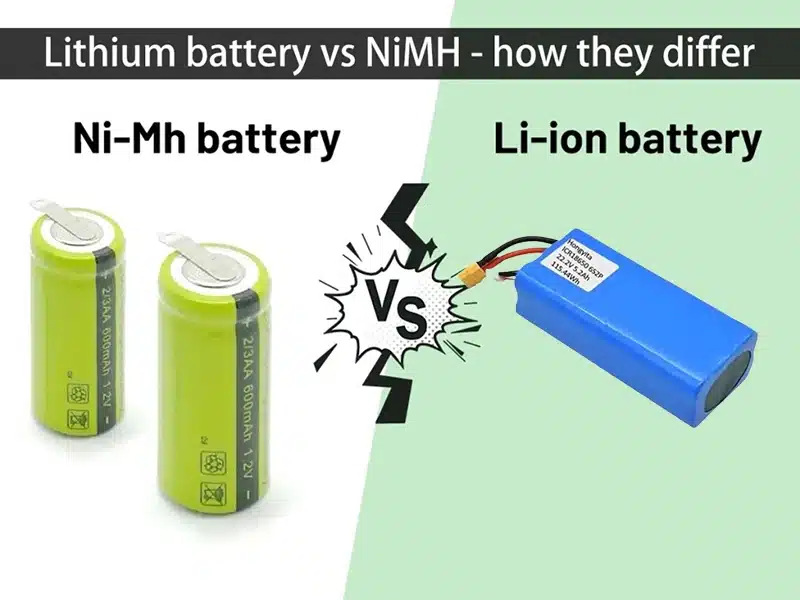Still struggling with nickel metal hydride (NiMH) or lithium-ion batteries? Don’t worry! This article will compare the two batteries in the simplest way to help you make an informed choice. In 2025, lithium-ion batteries dominate with their high energy density, but NiMH batteries still have a place due to their safety and cost-effectiveness. This guide will help you understand the differences between them so that you can choose the one that is best for you.
Last updated: May 16, 2025 | Estimated reading time: 8 minutes
Table of Contents
ToggleWhat is NiMH battery

The Nickel Metal Hydride (NiMH) battery is a rechargeable battery that uses nickel hydroxide as the positive electrode and metal hydride as the negative electrode. Compared to the earlier Nickel Cadmium (NiCd) battery, the NiMH battery has a higher energy density and lower memory effect.
What is lithium-ion battery

Lithium-ion (Li-ion) batteries are rechargeable batteries that use lithium ions to move between positive and negative electrodes to generate an electric current. Lithium-ion batteries are known for their high energy density, low self-discharge rate, and long life, and are widely used in a variety of devices.
Comparison between Lithium Batteries and NiMH Batteries

| Feature | Lithium-ion (Li-ion) | Nickel-Metal Hydride (NiMH) |
|---|---|---|
| Energy Density | 150-250 Wh/kg | 60-120 Wh/kg |
| Cycle Life | 500-1000 Cycles | 300-500 Cycles |
| Self-Discharge Rate | 1-2% / Month | 5-10% / Month |
| Cost | Higher | Lower |
| Environmental Impact | Relatively Environmentally Friendly | Relatively Environmentally Friendly |
| Safety | Some Risk Exists | Higher |
| Voltage | 3.7V (Typical) | 1.2V |
| Memory Effect | None | Low |
Energy density
The energy density of lithium-ion batteries is usually between 150-250 Wh/kg, while the energy density of nickel-metal hydride batteries is 60-120 Wh/kg, which means that lithium-ion batteries can store more energy in the same volume or weight. This makes lithium-ion batteries an ideal choice for devices that require long battery life, such as smartphones and laptops.
Cycle life
Li-ion batteries typically have a cycle life of 500-1000 times, while NiMH batteries have a cycle life of 300-500 times, which means they can be charged and discharged many more times without significantly degrading performance. However, actual lifespan will be affected by usage conditions and charging habits.
Self-discharge rate
Li-ion batteries have a lower self-discharge rate, losing about 1-2% of their charge per month, while NiMH batteries have a higher self-discharge rate, losing about 5-10% of their charge per month, which means they can retain their charge even after long periods of non-use. NiMH batteries have a higher self-discharge rate and need to be charged more frequently to remain usable.
Cost
Li-ion batteries generally cost more than NiMH batteries. While prices vary by manufacturer and model, in general, Li-ion batteries cost 1.5 to 2 times more than NiMH batteries. This makes them favored for cost-sensitive applications such as toys and certain home appliances.
Safety
Lithium-ion batteries present safety risks under certain conditions, such as overcharging, over-discharging, short circuiting or high temperature, which may cause the battery to overheat, catch fire or even explode. This is because lithium-ion batteries use flammable organic electrolytes. All lithium-ion batteries produced by Hongyitai are equipped with high-precision protection boards to avoid safety accidents.
NiMH batteries are relatively safe. They use aqueous electrolytes such as potassium hydroxide, which are non-flammable. In addition, NiMH batteries are more tolerant to overcharge and overdischarge, so they are less likely to experience thermal runaway. However, NiMH batteries can still leak corrosive electrolytes under extreme abuse conditions.
Voltage
The typical voltage of a Li-ion battery is 3.7 V, while the voltage of a NiMH battery is 1.2 V. This means that in some applications, more NiMH batteries are needed to achieve the same voltage as a Li-ion battery.
Application scenario comparison

Lithium-ion batteries: Smartphones, laptops, electric cars, tablets, drones, medical devices. Many portable medical devices, such as defibrillators and ventilators, rely on lithium-ion batteries to provide reliable power. Their lightweight properties and high energy density are crucial. Click to view our medical lithium polymer battery products.
NiMH batteries: remote controls, toys, cordless phones, power tools, hybrid cars.
Which battery is best for me?
Which battery you choose depends on your specific needs and preferences:
- If high energy density and long battery life are required: Lithium-ion batteries are a better choice.
- If cost is sensitive and safety is a primary concern: NiMH batteries may be more suitable.
- If the application requires a high discharge rate: Consider specially designed high power NiMH batteries.
Conclusion
Lithium-ion batteries and NiMH batteries each have their own advantages and disadvantages. Lithium-ion batteries excel in high energy density and long life, while NiMH batteries have advantages in cost and safety. When choosing a battery, we can help you evaluate the entire battery solution for free.
